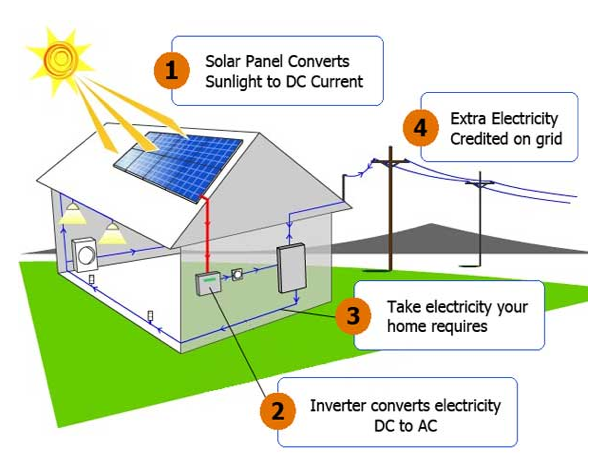How Does Solar Energy Work?

One of the most frequently asked questions about solar energy is, “How does solar energy work?” There are many theories about solar panels, but the basic principles remain the same. The basic concept is that sunlight heats up a liquid (usually water or a mixture of water and glycol in cold regions), and this liquid transfers heat to another liquid, usually water. This process is repeated several times until the desired temperature is reached. The conversion process does not generate electricity, but is relatively simple.
The main component of a solar panel is silicon, which is held together by a glass or metal casing. Silicon is the second most abundant element on Earth and is useful as a semiconductor, which means it can conduct electricity under certain conditions. The photovoltaic cells on the solar panel collect light, which then travels through wires to generate electricity. The electricity produced by these panels then flows through an electrical box and into the home or the grid.
When the sun shines on a solar panel, the photons from the sun hit the silicon, causing the silicon atoms to emit electrons. This discharged electron creates a direct current, which is then converted to alternating current (AC) electricity. The electricity then travels through the electrical panels to light your home and power appliances. This method of electricity generation is incredibly efficient and is becoming increasingly popular.
Net metering is another feature of a solar system. This type of meter measures your net power consumption and gives credit for it to the power company. This allows you to save money on your electricity bills by using less of the grid and boosting your output. You can even opt to export your energy to the grid if you have excess power. This way, you can reduce your utility bills and maximize your solar investment. And don’t forget to use your solar panels to produce electricity.
The efficiency of a solar panel depends on several factors. The amount of sunlight reaching the earth’s surface is crucial to the process of solar power generation. Cold weather and sunny days are ideal for solar power generation. Although cold weather decreases the efficiency of solar panels, it is still possible to produce electricity. If the temperature is high, however, solar panels produce electricity more efficiently. The temperature and solar panel angle will affect the amount of electricity produced.
During the early 1200s, humans discovered how to use sunlight to burn. They also began to use south-facing buildings to harness the sun’s energy. Natives and Romans started using the technology in architecture and solar panels. As scientists developed, other ways of harnessing sunlight were found. Solar-powered steamboats and ovens on ships were created. All this progress made solar power the most popular form of alternative energy today.
Thermal energy from the sun is used in solar thermal systems. These systems use the heat produced by the sun to heat water and generate electricity. Water is heated in solar thermal systems and then turns turbines to create electrical current. The electricity produced by these turbines can then be used to power appliances and other devices. These solar thermal systems are a great option for homes in colder regions of the world. You’ll be able to save money and get off the electricity grid, while at the same time reducing your carbon footprint. If you’re not sure about solar energy, consider Palmetto for your solar installation project.
Comments
Post a Comment